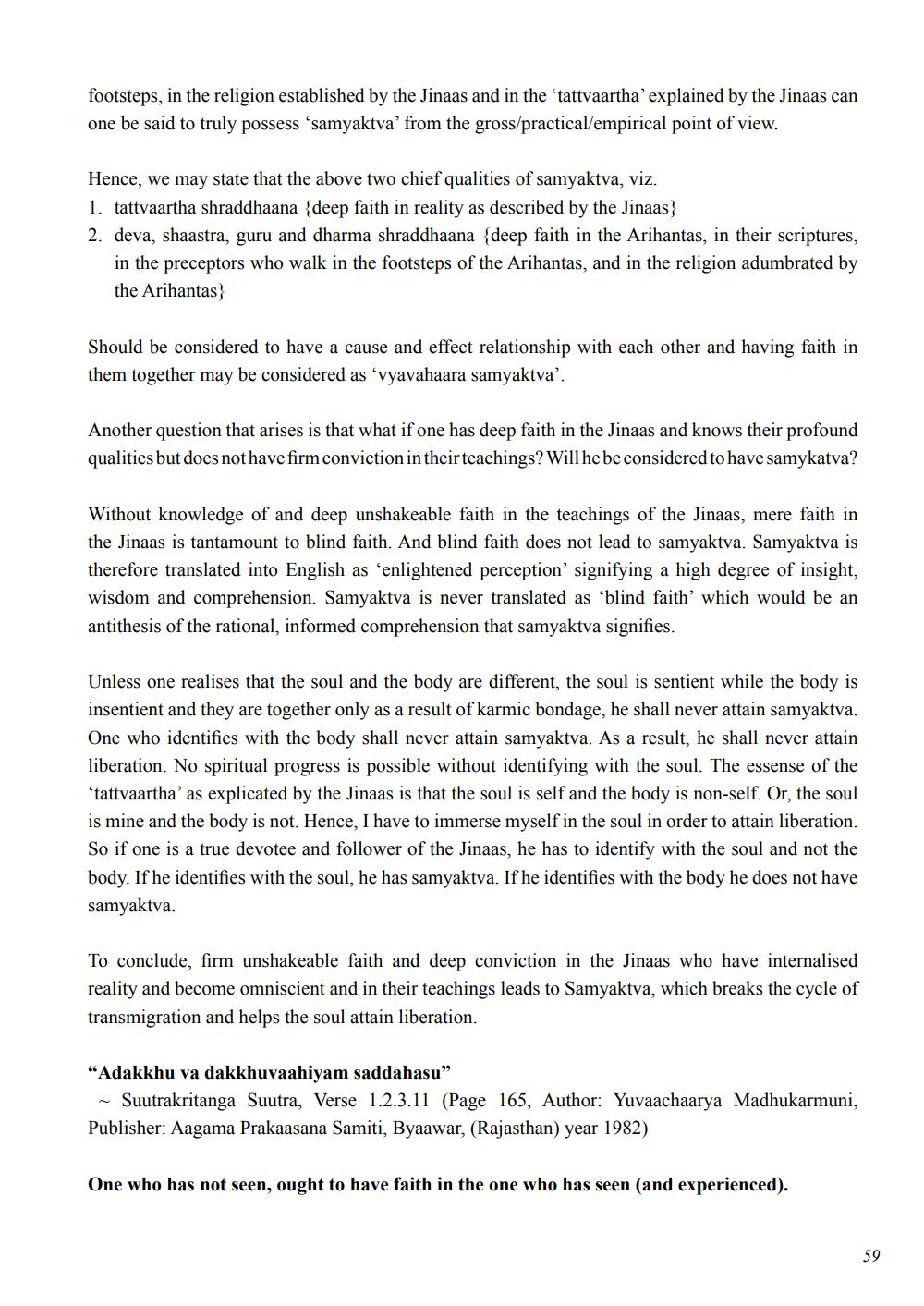________________
footsteps, in the religion established by the Jinaas and in the 'tattvaartha' explained by the Jinaas can one be said to truly possess 'samyaktva' from the gross/practical/empirical point of view.
Hence, we may state that the above two chief qualities of samyaktva, viz.
1. tattvaartha shraddhaana (deep faith in reality as described by the Jinaas}
2. deva, shaastra, guru and dharma shraddhaana (deep faith in the Arihantas, in their scriptures, in the preceptors who walk in the footsteps of the Arihantas, and in the religion adumbrated by the Arihantas)
Should be considered to have a cause and effect relationship with each other and having faith in them together may be considered as 'vyavahaara samyaktva".
Another question that arises is that what if one has deep faith in the Jinaas and knows their profound qualities but does not have firm conviction in their teachings? Will he be considered to have samykatva?
Without knowledge of and deep unshakeable faith in the teachings of the Jinaas, mere faith in the Jinaas is tantamount to blind faith. And blind faith does not lead to samyaktva. Samyaktva is therefore translated into English as 'enlightened perception' signifying a high degree of insight, wisdom and comprehension. Samyaktva is never translated as 'blind faith' which would be an antithesis of the rational, informed comprehension that samyaktva signifies.
Unless one realises that the soul and the body are different, the soul is sentient while the body is insentient and they are together only as a result of karmic bondage, he shall never attain samyaktva. One who identifies with the body shall never attain samyaktva. As a result, he shall never attain liberation. No spiritual progress is possible without identifying with the soul. The essense of the 'tattvaartha' as explicated by the Jinaas is that the soul is self and the body is non-self. Or, the soul is mine and the body is not. Hence, I have to immerse myself in the soul in order to attain liberation. So if one is a true devotee and follower of the Jinaas, he has to identify with the soul and not the body. If he identifies with the soul, he has samyaktva. If he identifies with the body he does not have samyaktva.
To conclude, firm unshakeable faith and deep conviction in the Jinaas who have internalised reality and become omniscient and in their teachings leads to Samyaktva, which breaks the cycle of transmigration and helps the soul attain liberation.
"Adakkhu va dakkhuvaahiyam saddahasu"
Suutrakritanga Suutra, Verse 1.2.3.11 (Page 165, Author: Yuvaachaarya Madhukarmuni, Publisher: Aagama Prakaasana Samiti, Byaawar, (Rajasthan) year 1982)
One who has not seen, ought to have faith in the one who has seen (and experienced).
59




